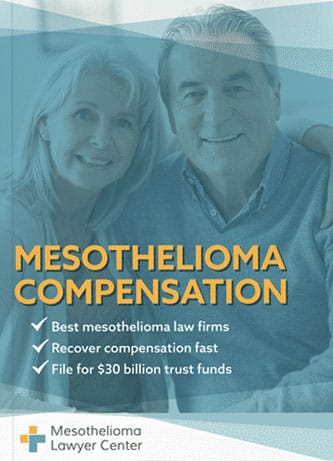Raymark (Raybestos-Manhattan Industries, Raytech) made brakes and other products using asbestos for many years. The resulting lawsuits over mesothelioma and other illnesses forced the company into bankruptcy. Raymark created an asbestos trust fund to compensate victims.
With more than $30 billion currently set aside in trust funds, you may qualify for substantial compensation if you’ve been diagnosed with mesothelioma, asbestos-related lung cancer, or asbestosis. Llene nuestro formulario para recibir nuestro boletín gratuito Financial Compensation Packet. Our packet is loaded with information on experienced mesothelioma attorneys in your area, how to file a claim for asbestos trust funds, how to get paid in 90 days, and more.


Paquete de compensación financiera GRATUITO
- Información sobre despachos de abogados que recuperarán su INDEMNIZACIÓN MÁS ALTA
- Aprenda cómo cobrar en 90 días
- Solicite su parte de $30 mil millones en fondos fiduciarios

Did Raymark Use Asbestos?
Raymark went by many names over the years, including Raybestos, which advertised the fact that it used asbestos. It primarily used asbestos in brakes but also made other asbestos products until the early 1980s.
Raymark History
The A.H. Raymond Company was founded in 1902 by Arthur H. Raymond, headquartered in Stratford, Connecticut. The company became known for its brakes, including the first model, the Raymond Brake.
Over many years, Raymond changed hands, acquired other companies, and went by different names:
- Raytech
- Raybestos Industries
- Raybestos-Manhattan
- Raymark Industries
The company’s name included Raybestos until 1982, when it changed to Raymark. The company needed to distance itself from asbestos in the face of lawsuits.
Raymark faced thousands of lawsuits from workers exposed to asbestos from its products. Early lawsuits uncovered evidence that executives at Raymark knew about the peligros del amianto but did nothing to protect workers until they finally stopped using asbestos in the 1980s.
Raymark spun off a company called Raytech to hold liabilities. Ultimately, both Raytech and Raymark had to file for bankruptcy. Raytech established an fondo fiduciario para el amianto, which opened in 2001.
Raymark Asbestos Products
Raymark and Raybestos were most well-known for automotive brakes that contained asbestos. Most brakes at one time were manufactured with asbestos to protect against overheating. Other products Raymark made with asbestos include:
- Asbestos blankets
- Clutches and clutch linings
- Felt
- Fire curtains
- Packing
- Tape
- válvulas
Who Was at Risk of Asbestos Exposure from Raymark Products?
Raybestos employees who worked in the factories manufacturing asbestos products faced some of the highest risks of exposure. Although their risk was high, this was a small group in comparison to other at-risk workers.
Raybestos products were distributed throughout the automotive industry and other industries and workplaces. Some of the many types of workers at risk of exposure to Raybestos products include:
- Automotive assembly plant workers
- Automotive parts retail workers
- Auto mechanics
- Railroad mechanics
- Mill workers
- Textile workers
- Shipyard workers
- Industrial workers
- Soldadores
- Aisladores
Also at risk were home mechanics, people who replaced brakes and clutches on their own vehicles. Even today, hobbyists with vintage cars or who use imported brakes and clutches can be exposed to asbestos in these parts.
Raymark Hides Asbestos Information
Like many other companies facing asbestos lawsuits, Raymark tried to deny any knowledge of the harms of asbestos. This was rarely true, and most executives had some idea of the dangers.
According to internal documents, a past president of Raymark suppressed information about the dangers of using asbestos in the company’s products. Lawyers in an early case from 1978 found the information in court documents in New Jersey.
Records also indicate that the president, on several occasions, hid evidence presented to the company that asbestos was indeed dangerous so that the financial gain could continue.
In a letter written by then-president Sumner Simpson, he stated that the company would be better off saying less about asbestos. He had some knowledge of asbestos risks for decades before the company stopped using it.
Raymark/Raybestos Asbestos Lawsuits
Raybestos began facing demandas por amianto in the 1970s. The company stopped using asbestos and changed its name to Raymark in 1982.
In one lawsuit, Adella and Claude Cimino represented thousands of workers in a class action. The workers were employed in Texas shipyards, oil refineries, and chemical plants. Both Ciminos worked in a refinery and were later diagnosed with asbestosis.
The lawsuit involved several defendants, including Raymark. The case took a long time to resolve but ultimately ended in a $178 million settlement for the victims.
Another case involved a Raybestos employee, James Stevens, who died from an asbestos illness. He received compensation while alive, but his widow also sued Raybestos for funeral and dependent’s benefits. She won her compensation on an appeal.
Bankruptcy and Asbestos Trust
Although the company fought aggressively against the mounting lawsuits, too many people were injured. Raymark filed for Chapter 7 bankruptcy in 1989. Raytech, the company spun off to hold liabilities, also filed for bankruptcy.
As part of the bankruptcy process, Raytech set up the Raytech Corporation Asbestos Personal Injury Settlement Trust.
Per court documents, the asbestos trust fund has $52 million in assets meant to handle asbestos-related personal injury claims. The current payment percentage is 0.92%.
Raymark Environmental Exposure
Raymark and Raybestos caused harm to many individual workers. It also harmed the environment and put residents near their plants at risk of exposure to asbestos and other toxic substances.
Stratford, Connecticut, Superfund Site
The U.S. Environmental Protection Agency (EPA) listed the Raymark Stratford location as a Superfund site needing significant cleanup and remediation.
According to the EPA, Raymark violated many environmental laws, leading to numerous people who never worked for the company developing illnesses. Studies show Stratford residents have higher cancer rates than average, including mesothelioma.
Over 40 residential homes were affected after decades of Raymark dumping hazardous wastes. Schools, playgrounds, and public buildings were so contaminated due to Raymark’s negligence that the Agency for Toxic Substances and Disease Registry (ATSDR) warned the public that they were at risk from contaminants in clothing, soil, and the air.
Although remediation began in the 1990s, as of 2023, the EPA is still working on the site. In 2023, a proposal was made to spend $11.2 million on an area that has not yet been cleaned of toxins.
Contamination in Pennsylvania
Raybestos had two manufacturing facilities in Pennsylvania, in Hatboro and Manheim. The Hatboro site is an EPA Superfund and once treated electroplating waste materials. It has been remediated and is still monitored by the EPA.
The Manheim facility manufactured asbestos brakes and clutches. It is currently listed as a Brownfield site with cleanup under the authority of the state and local governments. The official remediation is complete, and it is no longer monitored.
Raymark and Raybestos Today
An aftermarket automotive supplier called Echlin bought the Raybestos brand of brakes in 1985. It created a new company called Brake Parts Inc., which still operates and sells Raybestos brand brakes. Modern Raybestos brakes do not contain asbestos.
What to Do if You Were Exposed to Asbestos in Raymark Brakes
If you worked with Raymark brakes in the past, you could be at risk for mesotelioma maligno and other illnesses. Talk to your doctor about your risk factors and any recommended screenings.
If you have been diagnosed with an asbestos illness, contact a abogado especializado en mesotelioma o bufete de abogados especializado en amianto to help you get compensation through the trust. They can give you the best chance of making a successful claim and find other options for compensation.
Additional Resources for Asbestos Victims
Remember, if you’ve been diagnosed with an asbestos-related illness, there is a good chance you’ll qualify for considerable compensation. Remember to fill out our form for your free Financial Compensation Packet, with information on asbestos and mesothelioma lawyers in your area.

Pablo Danziger
Revisor y editorPaul Danziger creció en Houston, Texas, y se licenció en Derecho en la Facultad de Derecho de la Universidad Northwestern en Chicago. Durante más de 25 años, se ha dedicado a representar a víctimas de mesotelioma y a otras personas afectadas por la exposición al asbesto. Paul y su bufete han representado a miles de personas diagnosticadas con mesotelioma, asbestosis y cáncer de pulmón, obteniendo indemnizaciones significativas para los clientes lesionados. Cada cliente es fundamental para Paul y atenderá todas las llamadas de quienes deseen hablar con él. Paul y su bufete se encargan de casos de mesotelioma en todo Estados Unidos.
Conéctese con el abogado especializado en mesotelioma Paul Danziger
Referencias
- Christopher, M. (2006, April). Raymark Industries. Abandoned America.
Recuperado de: http://www.abandonedamerica.us/raymark-industries - Claims Processing Facility, Inc. (n.d.). Raytech Trust FAQs.
Recuperado de: https://www.cpf-inc.com/trusts/raytech-trust/raytech-trust-faqs/ - U.S. Environmental Protection Agency. (n.d.). Superfund Site: Raymark Industries, Inc. Stratford, CT. Cleanup Activities.
Recuperado de: https://cumulis.epa.gov/supercpad/cursites/csitinfo.cfm?id=0100094 - Conlin, M., Levine, D., and Girion, L. (2019, December 19). Why Big Business Can Count on Courts to Keep its Deadly Secrets. Reuters.
Recuperado de: https://www.reuters.com/investigates/special-report/usa-courts-secrecy-lobbyist/ - Krosnowski, T. and Del Vecchio, A. (2023, August 23). EPA Proposes Cleanup Plan for Parts of Stratford Affected by Former Raymark Industries Plant. News12 Connecticut.
Recuperado de: https://connecticut.news12.com/epa-proposes-cleanup-plan-for-parts-of-stratford-affected-by-former-raymark-industries-plant
